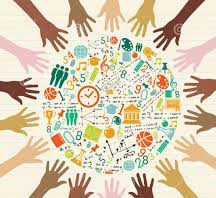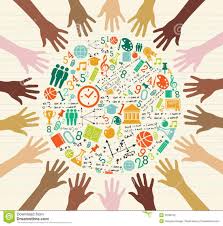 AMS Fulfillment enjoys the many benefits of a diverse workforce. Like many other B Corporations, we find that diversity stimulates growth and innovation as it strengthens and enlivens our corporate family.
AMS Fulfillment enjoys the many benefits of a diverse workforce. Like many other B Corporations, we find that diversity stimulates growth and innovation as it strengthens and enlivens our corporate family.
The diversity of peoples and cultures and nature itself is the treasure of this world. When we see how people and things differ, it teaches us, broadens us and gives guidance to the wise. We human beings are anything but ‘the same’ and that is a very good thing. And so we begin 2021 by taking a moment to look at the ‘when and how’ different Peoples of the earth mark the new year and celebrate.
In our last blog we talked about Chinese New Year, which begins on February 12th. According to Chinese astrology, based on the Lunar calendar, 2021 is the year of the Ox. The celebration in past years has been a time when millions of people travel home, businesses close and even the ports close and shipping comes to a halt. This celebration is old and renowned.
In this blog we’ll look at how celebrations are done in Israel, Iran and India.
In addition to China, there are other cultures that do not celebrate the first day of January as the new year. Due to customs and traditions, their new year is marked on another day and month that sets them apart from the rest.
The first example is Israel and the Rosh Hashanah celebration.
Rosh Hashanah, translated as “Head of the Year,” is a time of rejoicing and introspection for Jewish people in Israel and around the world. It is the first of the High Holidays ending 10 days later with Yom Kippur. In 2020 the two-day Rosh Hashanah celebration started on September 18 and in 2021 it will begin on September 6th.
The celebration begins with the sounding of an instrument made of a ram’s horn, called the shofar. The horn is sounded to proclaim God as King of the Universe and to call the people to repentance and commitment to God. The shofar begins the “Ten Days of Repentance” which ends with the “Day of Atonement,” Yom Kippur.
Rosh Hashana is an ancient celebration with many meaningful traditions. Special symbolic foods are eaten, like dates, leeks, beets and pomegranates. Each food holds special meaning. Ancient meaning is given to apples dipped in honey. The apples and honey are always on the table, as this food is a tradition dating back hundreds of years. The apples were believed to have healing properties, and the honey signifies hope for a sweet new year.
The next celebration in our diversity journey takes place in Iran – it’s called Nowruz.
For 13 days, beginning March 21, 2021, people in Iran and also in Afghanistan celebrate the Persian New Year, Nowruz, which means “new day,” or the start of spring. Nowruz is an ancient celebration, around 4,000 years old. The Iranian and Zoroastrian communities celebrate this festival. It falls on the day of the vernal equinox, when night and day are about the same length
It is celebrated with families coming together and giving gifts. Wearing new clothes is important as new things represent a fresh start. A major part of the holiday is a deep cleaning for about three weeks during which homes are tidied and cleared of clutter, which also makes way for a fresh start.
A table is set in the home to represent wishes for the New Year. The foods includes sabzeh (sprouts growing in a dish) for renewal, senjed (dried fruit) for love, seeb (apples) for health, seer (garlic) for medicine, serkeh (vinegar) for patience, somaq (berries) for sunrise and samanu (sweet pudding) for wealth. On the eve of the New Year, children wear costumes, bang on pots and pans and visit their neighbors to ask for sweets. The final day of celebration is spent picnicking in the open air and enjoying many different kinds of pastries.
India is the next place we’ll look for a new year tradition.
There is a wonderful celebration in India that millions of people enjoy called Diwali – the festival of light!! The celebrations last for five days, and in 2021 they will begin on November 4th. Diwali celebrations coincide with the New Year, usually held between mid-October and mid-November, depending on the Hindu lunar calendar.
Different cultures celebrate Diwali for different reasons. For Hindus, it is a celebration of good over evil, based on a story of Rama, the lord of virtue, returning to his kingdom after a 14 year exile. Similar to the Nowruz celebration in Iran, Indian people clean their homes, getting rid of the old, and they wear new clothes, give gifts and eat sweets.
It is also a tradition for families to have feasts and watch exciting displays of fireworks. In addition to Hindus, Jains, Sikhs and Buddhists take part in festivities, cleaning and decorating their homes. Children make clay lamps, called ‘diya’ to illuminate the house and bring good fortune.
***
So there we have it – a look at the beautiful diversity of the Peoples of the earth in how we all welcome a new year. May all of our new years be peaceful and rewarding.




